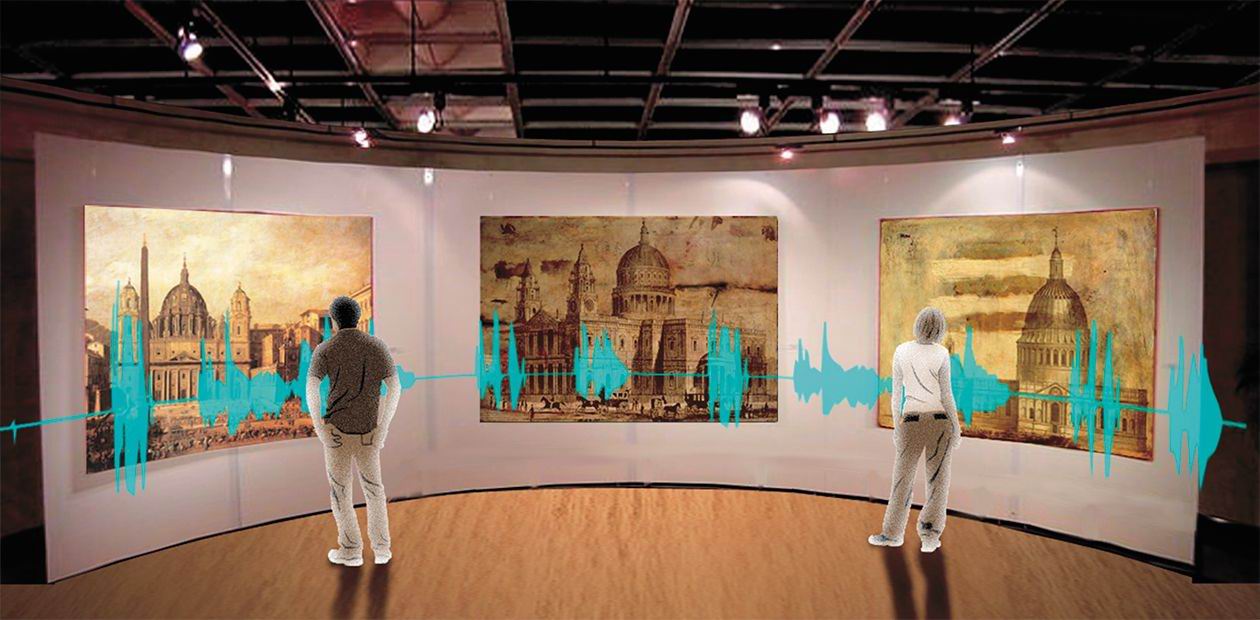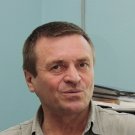Effect of the Whispering Gallery
“Whispering galleries” is not the exact name: certainly, it is not the walls, it is the people standing near these walls that whisper, but this is the term that has gained wide acceptance. Several whispering galleries, walls, and buildings mainly associated with religious sanctuaries or heathen temples are known in the world.
It is clear that the ministers of the corresponding religions or stewards of these buildings support the opinion that these buildings are magically exceptional and even sacredly mysterious, because this opinion serves their interests.
Such an opinion is imposed on the insufficiently educated public by means of skilful, well-presented, and wide advertising.
Most people do not have enough time to think about the real reasons for this mysterious phenomenon caused by the laws of nature.
Because of the lack of time or education, most people willingly believe what they are told.
We all like secrets. Crowds of tourists and inquisitive people, with sinking hearts, whisper in these miraculous buildings.
It was difficult for the author to come to the decision to write an article about the real reasons for the effect of whispering galleries: their mystic fame is too widely spread. People often do not want to admit their ignorance and to know the truth. They like miracles, and miracles exist thanks to this affection.
Yet, any person who understands the acoustic nature of these mysterious buildings can build his own whispering gallery if he wishes.
Acoustic dualism
The first thing we should do is to recall what acoustic waves are. In physics, this term is used to denote weak perturbations of pressure in the air. Propagation of low-amplitude acoustic waves is described by a linear hyperbolic system of equations. A typical feature of such systems is the existence of a wave front. Pressure perturbations propagate along the bicharacteristics of this system of equations, which are usually called rays.
Propagation of acoustic waves along the rays is described by geometric acoustics; this subsection of the wave theory is sometimes called the ray theory. The motion of air particles occurs in the direction of propagation of the acoustic wave, along the bicharacteristics — rays. Propagation of an acoustic perturbation along the ray is fairly similar to the motion of a certain particle. The wave-particle dualism is equally valid for acoustic and for light (electromagnetic) waves or waves on the water surface.
Probably, this is the reason for the eternal discussion: Is the photon a particle or a wave? This discussion, however, is purely terminological. People are pragmatic and normally choose the viewpoint convenient for calculations and description of the wave behavior. In each particular case, clearly, the choice depends on the phenomenon being examined, more exactly, on the wave length, the object size, etc.
For convenience, we will consider the sound as propagation of certain particles along the rays or waves.
Wave decay
The waves decay in amplitude in free space for two reasons. The first is absorption of the wave energy by the medium, dissipation or absorption of energy owing to viscous friction. In this case, acoustic energy is converted to thermal energy, and acoustic flows can be formed. The second reason is the decrease in wave amplitude with distance from the source owing to the increase in the spatial front of the wave. In this case, the acoustic energy as a whole remains unchanged but is distributed in space. The decrease in the amplitude is proportional to the length or area of the wave front. Normally, this type of decay is the main. Therefore, to increase the range of audible sound, one needs waveguides (natural or artificial), which localize the energy of acoustic waves in a required direction. An example of such systems is the speaking tube used in the navy.
Audibility and shadow zones — billiards as a model
One can readily imagine that acoustic waves often meet various obstacles. The following statement is valid for solid surfaces: the local angle of wave incidence equals the local angle of wave reflection. This is sufficient to describe the reflection of acoustic waves from the walls of a conventional building without any special coatings. As air particles move along the direction of acoustic wave propagation – along the rays, the angle of incidence can be assumed to be equal to the angle of reflection of the ray.
How are acoustic waves perceived by the human ear?
To understand what the audibility zone and the shadow zone of the acoustic ray inside a building are, one can use methods developed for the “mathematical billiards.” This imaginary billiards has no pockets, its walls coincide with its perimeter, and the field of the billiard table coincides with the floor inside the building.
In this case, we can argue that the audibility zone is located in the neighborhood of a set of points of all possible positions of a billiard ball launched in the direction of acoustic ray propagation. The shadow zone is described as the entire billiard field except for the audibility zone.
In the general case, for arbitrary billiard walls, the description of the shadow zone is a difficult problem. For some cases, the shadow zone can be described rather easily.
Thus, in a circular billiard field, the ball always moves along the chord connecting two consecutive points of reflection from the walls. As the angle of incidence equals the angle of reflection, all chords connecting two consecutive points of ball reflection have the same length. The zone of possible positions of the billiard ball in the circumference is located in a ring between the billiard wall and the circumference tangent to the billiard-ball trajectory.
Trick with a cylinder
The frequency characteristics of human speech are within the range from several hundred to one and a half thousand vibrations per second (hertz). The frequency analysis of the spectrum of human speech shows that the frequency of whisper is higher than the frequency of the usual speech. Therefore, methods of geometric acoustics are better applicable to describe the propagation of acoustic waves of whisper than that of the usual speech.
If a person stands near a wall with a circular foundation and whispers in the direction along the wall, we can assume that he whispers in the direction of a certain ray. Whispering near a wall is directed; hence, the whisper audibility zone can be assumed to be in the ring cylinder. This cylinder is bounded on the one side by the wall and on the other side by a cylinder with the directional circumference that is concentric with the building foundation and touching the longest chord of the ray where the whispering sound is located. Whisper will be heard only by those people who are standing directly within the ring cylinder. In the sound shadow zone, however, whisper will not be heard at all. This is the effect of the whispering gallery.
In three-dimensional space
All buildings have floors, but some buildings may have no ceilings. Let us consider some variants possible in passing from the two-dimensional plane of the mathematical billiards to the real three-dimensional world.
No ceiling. In this case, the floor plays the role of a certain mirror. We can assume that in this case two people specularly reflected from the floor will be whispering to you. In the audibility zone, the decay of sound is inversely proportional to the distance between the source of sound and the hearer.
In free space, the decay of sound is inversely proportional to the squared distance between the source and the target.
Ceiling parallel to the floor. In this case, the ceiling and the floor play the role of two mirrors. You will hear whispering of an infinite number of people specularly reflected from the floor and the ceiling. The sound will not decay.
Ceiling or walls of an ellipsoid shape. To give a comprehensive description of the ways of stealthy whispering, we have to note the wonderful properties of the ellipsoid. If the source of sound is located at one of the ellipsoid foci, the maximum audibility is reached at the other focus.
Therefore, if the roof of a building or its walls have an ellipsoid shape, regardless of the remaining architecture of the building, two people standing in the ellipsoid foci can whisper without paying attention to those around. Such a “spot” of the maximum audibility is the main distinction of ellipsoid galleries from circular ones. The latter, in contrast, have an audibility zone.
Become a miracle-worker
If somebody who has read this article feels like constructing his own “whispering” building, we can recommend using an ellipse as a foundation for this building. The shape will allow you to talk incognito to your guest standing in the second focus without the fear of eavesdropping.
Possibly, the building you will construct will rank among the world-famous sights, such as the whispering wall in China, Saint Peter’s Cathedral in Rome, the Hall of Sculptures in the Capitol, and the room at the bar entrance on the ground floor of the Central Railway Station in New York.






